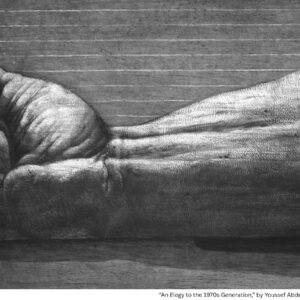
A More Imperfect Union: How Differing National Visions Divided the North and the South
Alan Taylor on the Fragile Facade of Republicanism in 19th Century America
“Nothing on earth is settled under this Constitution, but the principle that everything is unsettled.”
–Henry Clay
*Article continues after advertisement
Prior to the Civil War, Americans did not have a nation. Instead, they lived in a union of states, each a republic that retained almost all domestic sovereignty. Americans revered their Union, but that was not the same thing as sharing a sense of national identity. Indeed, union enabled citizens to avoid fully bonding as Americans by protecting every state from the others. Americans considered a union essential to preserve the liberty of free men.
Republics were rare and embattled in a world dominated by empires run by monarchs and aristocrats. In 1848 Europe’s lords and kings crushed widespread republican revolutions that had begun with great promise. After those defeats, republican radicals fled to the United States, enhancing Americans’ conviction that they alone could sustain free government.
But to keep that rare and cherished freedom, Americans needed to preserve their Union, designed to keep peace between their states. They sought to avoid the wars that bloodied a divided Europe—and that promoted rule by monarchs. In 1839, Senator Henry Clay of Kentucky warned Americans that a rupture in the Union would produce a civil war’s “desolated fields, conflagrated cities, murdered inhabitants, and the overthrow of the fairest fabric of human government that ever rose to animate the hopes of civilized man.”
Such destruction would invite dictators to seize power in the states. In 1850, an Illinois senator told a colleague: “Sir, where compromise ends, force begins, and when force begins, war begins, and the tocsin of civil war is the death knell of Republicanism.”
Americans needed a Union to keep their peace, but by clashing over the meaning of Union, they invited a bloody division.
Union preoccupied Americans because it was so precious and uncertain. In 1851, Senator Daniel Webster (Massachusetts) noted: “The Union of these States is the all-absorbing topic of the day; on it all men write, speak, think, and dilate, from the rising of the sun to the going down thereof.” But they could not agree on what that Union should be. Many northerners favored building a unifying nationalism that could sustain a stronger and perpetual Union ruled by the majority. But many Americans, especially in the South, feared national consolidation as a tyrannical vehicle for oppressing minority regions.
Advocating “states’ rights,” they preferred a loose and consensual confederation of equal, sovereign states, each retaining a right to secede. Noting deep and intense conflict over what the Union should be, John Quincy Adams lamented, “It is the odious nature of the question, that it can be settled only at the cannon’s mouth.” Here was the tragic paradox: Americans needed a Union to keep their peace, but by clashing over the meaning of Union, they invited a bloody division.
Between 1800 and 1850, Americans pushed territorial expansion to increase their distance from a potential enemy that could exploit weaknesses within the Union. Aggressive expansion especially appealed to slaveholders, who sought to stem the outflow of fugitives. By joining the Union, southerners gained legal rights to retrieve runaway slaves from northern states, but slaves could find safe havens by fleeing across borders to Canada, Mexico, or Native nations. A Texas planter complained that “all frontier[s] bordering on the United States” tended “to admit not only slaves but every class of depridators and refugees.” Slaveholders meant not simply to add plantations but also to subtract places where enslaved people could find haven. Otherwise, masters would lose more slaves to flight and might lose their own lives to revolts meant to facilitate mass escapes across any nearby border.
At the same time, Americans also worried that an expanding Union would grow too big, breeding an imbalance of power that favored one region at the expense of another. Then a minority region might secede, provoking a civil war that would drench the continent in American blood, dooming free government. After many decades of managing sectional tensions in Congress, Senator Clay sighed, “Nothing on earth is settled under this Constitution, but the principle that everything is unsettled.”
*
Americans boasted of their rapid territorial and population growth. Endowed with fertile land, abundant timber, navigable rivers, and a temperate climate, the United States was (compared to Europe) thinly populated but growing fast. Beginning along the Atlantic seaboard in 1776, the United States had burst westward across the Mississippi by 1810. Forty years later, Americans had colonized the Pacific coast, although much of the intervening Rocky Mountains, Great Basin, and Great Plains remained in Indian possession. Abundant land and plenty of food attracted millions of immigrants: 600,000 during the 1830s, 1,700,000 during the 1840s, and 2,300,000 during the 1850s.
The relative abundance also encouraged early marriages and large families, so the population grew by 35 percent during the 1840s and 1850s: four times greater than Europe’s rate. The population reached 30 million by 1855, surpassing Great Britain—which thrilled Americans and alarmed Britons. Economic growth increased per capita wealth by 1.7 percent annually between 1820 and 1860.
The early nineteenth century brought a transportation revolution through new technologies. Steamboats, canals, turnpikes, and railroads dramatically lowered the costs of shipment and increased the pace of movement. During the 1850s, the railroad became king, as Americans laid 21,000 miles of rail, increasing their total to 30,000, more than in the rest of the world. A trip between New York and Chicago shrank from three weeks to two days. Towns along the rails boomed. As the terminus for fifteen rail lines, Chicago grew by 375 percent during the 1850s. Technology also transformed communication, as the telegraph conveyed news almost instantaneously across the country.
Improved transportation and communication promoted a more integrated national market as goods moved more quickly and cheaply over long distances. That integration fed regional specialization as people developed their comparative advantages in local resources. So, the fertile Midwest shipped bumper crops of grain, pork, and beef eastward to feed the growing populations of coastal cities. Unable to compete with those midwestern farms, the farmers of New England began to specialize in garden crops and dairy production to serve the nearby cities. An abundant supply of cheap food enabled town and city folk to make their living in workshops and factories. Most Americans now procured their tools, clothing, and consumer goods via retailers from manufacturers—rather than relying on themselves and local artisans. Americans were creating a society of mass production and mass consumption.
Most Americans still lived in the countryside on farms and plantations, but the urban, manufacturing sector grew faster after 1820. By 1860, when a fifth of Americans lived in cities and worked in factories, the United States ranked second in the world in industrial output and was closing fast on the leader, Great Britain. Immigrants prevailed in the working class while native-born whites dominated the emerging middle class of clerks and managers.
For their growth and prosperity, Americans credited their republican Union framed during the American Revolution in reaction against British monarchy and aristocracy. Compared to Europeans, free Americans enjoyed political rights and a higher standard of living. For all their blessings, they expected praise from visitors. The French traveler Alexis de Tocqueville rather liked Americans but found them boastful and needy. Calling themselves “the only religious, enlightened, and free people,” they were “not very remote from believing themselves to be a distinct species of mankind.” While praising their republic, Americans denigrated European countries, especially Britain. An irritated Briton retorted by asking in what European country “is every sixth man a slave whom his fellow-creatures may buy and sell and torture?”
Committed to slavery, southerners felt locked in a hemispheric struggle against the British Empire as “the center and source of antislavery fanaticism.” During the 1830s, the British had freed the 800,000 slaves in their West Indian colonies, and that empire encouraged other nations to abolish the slave trade and emancipate enslaved people. A South Carolina congressman declared, “Our systems are at issue and the contest will be for mastery of the world. One or the other must go down or yield.”
To protect and promote slavery in the Americas, southerners sought control of the Union’s foreign and military policy. Prior to the Civil War, two-thirds of the presidents and secretaries of state and four-fifths of the secretaries of war and the navy came from the South. Although American law barred importing slaves from overseas, federal leaders refused to cooperate with the British naval efforts to suppress that trade. While waging a diplomatic struggle against British antislavery, southerners hoped to avoid a shooting war. They wanted no disruption in trade with Britain, the primary market for their cotton.
Considering republics natural and inevitable in North America, Americans dismissed the British colonies to their north in Canada as temporary anomalies destined eventually to join the Union. Americans saw Canadians as cursed by a colonial system that tethered them to Britain, ruled by a monarch and aristocrats. But most Canadians disdained the republican Union as corrupt, chaotic, and demagogic. Celebrating British rule for offering the proper balance of order and liberty, they derided Americans as bombastic hypocrites who boasted of freedom while keeping millions of Blacks in slavery. A New Brunswick newspaper declared, “Ere we annex ourselves to a slave-holding Republic, we’ll go down with the British flag—the true emblem of true liberty—flying at the mast-head.”
*
Highly participatory, American politics generated powerful identities and loyalties. Both parties, Whigs and Democrats, organized festive parades that attracted hundreds, culminating with free food and drink at barbecues. Elections were masculine, competitive, and drunken. With partisans plying supporters with alcohol, reason faltered and emotions surged, leading to clashes with fists, sticks, knives, and even guns to control polling places. Ambitious young men rose by serving on campaign committees that organized parades, turned out the vote, and battled with the rival party. The friends of a winning candidate reaped government patronage jobs and contracts, both deeply coveted in the hypercompetitive American society.
Relatively elitist, the Whigs appealed to propertied men, usually Protestants, by promoting an activist government that invested in economic development and pushed moral reforms, especially temperance. Democrats, however, distrusted government activism for favoring the special interests of wealthy corporations, especially banks. Democrats wanted the federal government only to deliver the mail, provide cheap land, help recover runaway slaves, and fight Indians, Britons, and Mexicans.
As the more populist (and racist) of the parties, the Democrats won more elections in an electorate restricted to men, and usually just white men. Between 1829 and 1860, Democrats captured two-thirds of the seats in the House of Representatives and three-fifths in the Senate. Democrats controlled the House for twenty-four years and the Senate for twenty-eight. They also won six of the eight presidential contests.
In 1850, most Americans were Protestants who regarded their faith as intertwined with republicanism, for both preached individual choice, self-improvement, and voluntary association. American Protestants divided into many competing denominations, primarily Baptists, Methodists, and Presbyterians. That competition increased popular participation in religious life, as did the populist and evangelical style of American preachers.
Most immigrants were Catholics, who confronted cultural dominance by American Protestants. Only 30,000 in 1790, the number of American Catholics surged to 1.6 million by 1855. The newcomers clashed with American-born workers, who resented immigrants as unwanted competition. Nativists also charged that Catholics would subvert republican government out of an alleged slavish loyalty to their monarch, the Pope. Protestant mobs sometimes rampaged through immigrant neighborhoods to burn Catholic chapels and convents.
During the 1840s, Whigs and Democrats divided over the culture war raised by immigration. In the North (where most immigrants settled), middle-class Protestants favored the Whigs, who promoted moral reforms that included restricting access to alcohol (a movement known as temperance) and expanding public schools to teach Protestant values. Most immigrants voted for Democrats, who championed an egalitarian individualism that opposed temperance and Protestant lessons in public schools. By promoting a confrontational foreign policy toward Britain, Democrats especially appealed to Irish immigrants who hated British rule over their homeland.
Competing with free Blacks for housing and jobs, poor immigrants usually adopted the white supremacy championed by most Democrats. Defending southern slavery as the price of preserving the Union, Democrats regarded racial inequality as a national bond of unity. Irish immigrants sought to refute nativist taunts that likened them to Blacks, including cartoons depicting “Paddy” as a swarthy ape. Asserting their whiteness, Irish Americans often rampaged through Black neighborhoods, burning houses and churches and lynching those who resisted. Immigrants learned that rising in American class began by embracing white supremacy.
During the early 1850s, the Whig party began to collapse, divided by internal tensions over slavery. Exploiting the new political vacuum, nativists created the “American Party,” but critics called them the “Know-Nothings.” Nativists sought to deny political office to Catholics and disenfranchise immigrants by prolonging the period of naturalization to twenty-one years. During the mid-1850s, the new American Party suddenly captured several state legislatures and 120 seats in Congress. In 1856, their presidential candidate won 22 percent of the popular vote. But the American Party flamed out as quickly as it had arisen, as politics became preoccupied with an even greater controversy: whether slavery should expand westward into federal territories.
Political leaders insisted that the Federal Constitution left issues of slavery within states entirely to each state to decide. After the American Revolution, emancipating slaves was possible in the North, where Blacks and masters were relatively few. But racism and segregation intensified as Blacks became free in the North—where they comprised only about 2 percent of the region’s population. Denied access to public education and good jobs, most northern African Americans worked as stevedores, sailors, barbers, bootblacks, domestic servants, and laundresses. After escaping from slavery, Frederick Douglass, struggled to find work in a northern city: “I was indeed free—free from slavery, but free from food and shelter as well.” Discrimination forced Blacks to cluster together in undesirable neighborhoods and to avoid crowds of white people as sources of violence. Free blacks also remained vulnerable to kidnappers who hauled them south for sale as slaves.
Mexicans and Canadians claimed moral superiority over Americans who boasted of their freedom while keeping 4 million Blacks enslaved.
Some northerners were abolitionists who wanted southerners immediately to emancipate their slaves without any compensation. Abolitionists highlighted the suffering of Blacks from whipping, hunger, sexual predation, and the rupture of their families by forced sales and migration. Favoring equal rights for all, abolitionists also challenged the North’s racist laws that enforced segregation and discrimination. But abolitionists remained a small minority in the North, where most people despised them as dangerous radicals who threatened social order as well as the Union. Mobs led by prominent men attacked abolitionists and destroyed their meeting halls.
By the 1840s, most southerners claimed that slavery was good for Blacks, making them contented, docile, and grateful to their masters: “the happiest laboring class in the world.” Considering African Americans unfit for liberty, racists exaggerated the supposed misery, insanity, indolence, and criminality of free Blacks in the North.
Despite casting slaves as content, masters warned that they would become murderous if agitated by outsiders. Southerners regarded abolitionists as reckless fanatics spreading insidious lies to disturb the happy relationship of masters and slaves. Southerners insisted that a Black revolt would massacre white people if, as Jefferson Davis asserted, slaves’ “weak minds should be instigated to arson, murder, and rapine.” So southern leaders repressed criticism of slavery, shutting down antislavery societies and abolitionist publications. And they expected northern help in that repression.
Ninety percent of American Blacks lived in the South as slaves. From 698,000 in 1790, the enslaved population soared to 4 million by 1860, when slaves comprised a third of the South’s population. Because slave labor was so profitable, the price of a male field hand doubled from $600 in 1800 to $1,200 in 1850. By refusing to legalize slave marriages or protect families from disruptive sales, southerners kept their human property liquid for sale, movement, and inheritance. In 1860, the monetary value of enslaved people exceeded that of all the nation’s banks, factories, and railroads combined. Masters would never part with so much valuable human property without a fight. James H. Hammond of South Carolina said southerners could not be “persuaded by arguments, human or divine, to surrender, voluntarily two billion dollars.”
Cotton cultivation drove the soaring value of slaves. Planters benefited from a booming export market as textile factories multiplied in Britain, France, and the American northeast. Cotton exports surged from 178,000 bales in 1810 to 4 million by 1860 (a bale weighed about 400 pounds). By 1840 cotton accounted for over half of the value of all American exports, and the United States produced more cotton than the rest of the world. No backwater, the South was the powerful half of a nation committed to Black slavery as well as white freedom.
Requiring a growing season of at least 200 frostless days, cotton thrived in the Lower South but not in the Upper South (Kentucky, Maryland, Missouri, and Virginia). As cotton planters expanded their fields and crops, they bought more slaves from the Upper South, where there was a “surplus.” Between 1790 and 1860, in one of the largest forced migrations in world history, slave traders and moving masters herded over a million slaves to the Lower South. That migration disrupted slave families and communities, as those removed had to leave behind wives, husbands, parents, and children.
Cotton cultivation demanded long hours of hard work through a prolonged growing season. Planting in the spring led to weeding under the hot summer sun and culminated in the fall harvest. Picking cotton bloodied hands from the sharp edges of husks around the fibers. If a slave met a work quota today, the master would expect more tomorrow—with failure punished by the whip. A Louisiana planter advised that whipping should “be repeated at proper intervals, until the most entire submission is obtained.”
To maximize profits by limiting costs, masters provided the minimal diet, clothing, and shelter needed to keep slaves alive and working. A former slave, Frederick Douglass, remembered “the close-fisted stinginess that fed the poor slave on coarse cornmeal and tainted meat, [and] that clothed him in trashy tow-linen and hurried him on to toil through the field in all weathers, with wind and rain beating through his tattered garments.”
Slavery defined southern society. Alabama planters noted, “Our condition is quite different from that of the non-slaveholding section of the United States….Their laborers are merely hirelings, while with us our laborers are our property.” Southerners insisted that slavery promoted economic growth by enabling masters to compel concerted labor to improve farms and plantations. An Alabama congressmen praised “the immense superiority of a system of associated slave labor over free individual labor.”
Cotton endowed southerners with political and international clout. Britain and France and the northeastern United States needed southern cotton. Without it, factories would close, leaving unemployed workers to starve. A critic of slavery noted the “unhallowed alliance between the lords of the lash and the lords of the loom.” In 1858, Hammond boasted, “The slaveholding South is now the controlling power of the world….Cotton is king.”
Slavery made the United States distinctive within continental North America. Although Mexico sustained a coercive labor system of indebted peons, they could not be bought and sold as commodities, for Mexicans banned slavery as incompatible with republican government. Canadians rejected slavery as at odds with the rights of Britons to “rational liberty.” Mexicans and Canadians claimed moral superiority over Americans who boasted of their freedom while keeping 4 million Blacks enslaved.
In 1857, a Mexican leader mocked the U.S. Constitution: “In that liberal Constitution which is so cried up, do we not see the most atrocious principle embedded, the most cruel, the most degrading for mankind—that of slavery?” He marveled that “a people that proclaims itself liberal and democratic to the point of hyperbole rivets into its Constitution an article that dishonors civilization and mankind.” Mexico and Canada attracted fugitives from American slavery. Those runaways generated tensions across the thin borders of the continent, for American slaveholders insisted that their security depended on closing every escape from their labor system.
__________________________________

From American Civil Wars: A Continental History, 1850-1873 by Alan Taylor. Copyright © 2024. Available from W.W. Norton & Company.
Alan Taylor
Alan Taylor, twice awarded the Pulitzer Prize in History, is the author of American Revolutions and American Republics, prior volumes in his acclaimed continental history of the United States. He is Thomas Jefferson Foundation Professor of History at University of Virginia, and lives in Charlottesville, Virginia.












